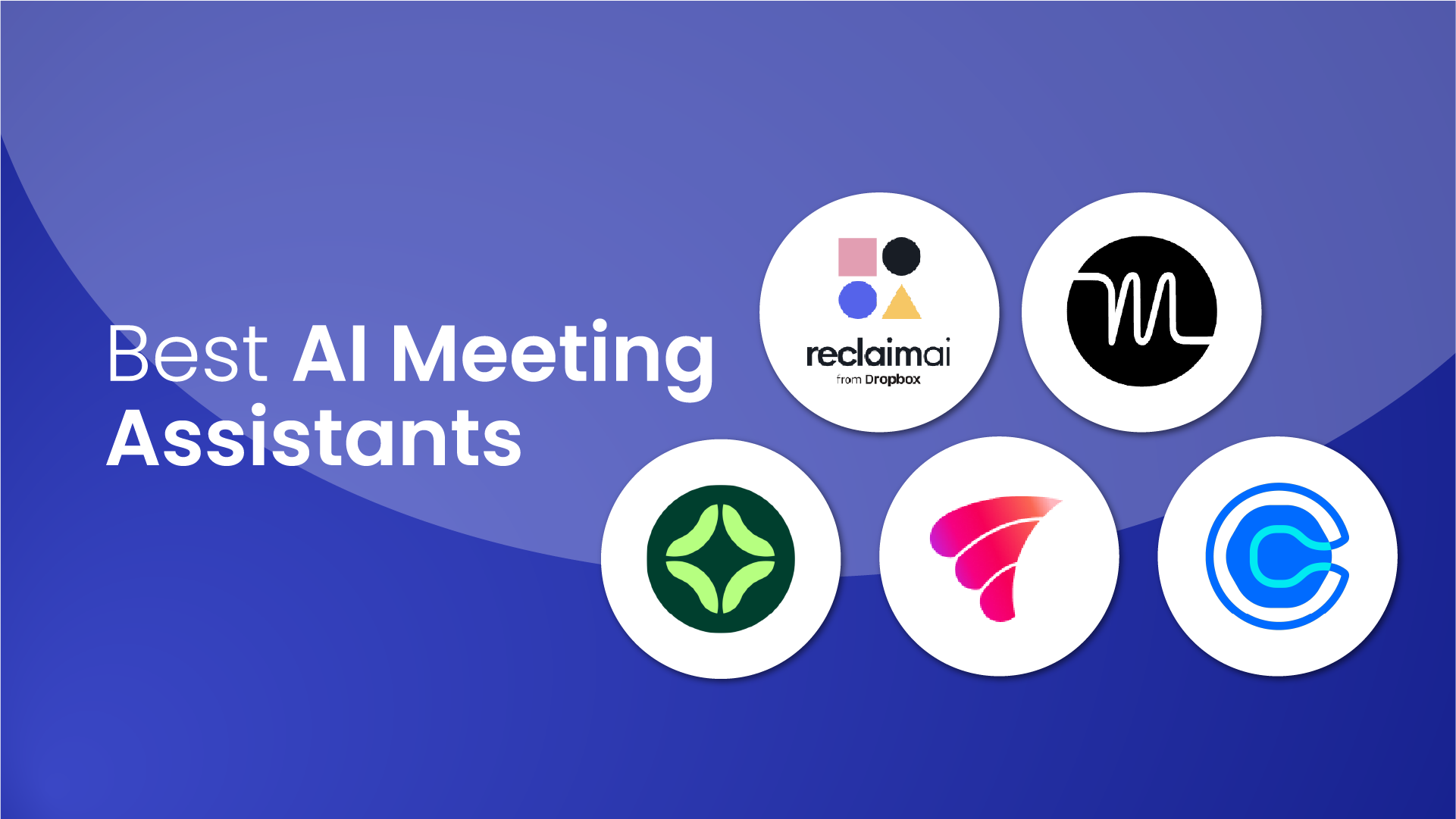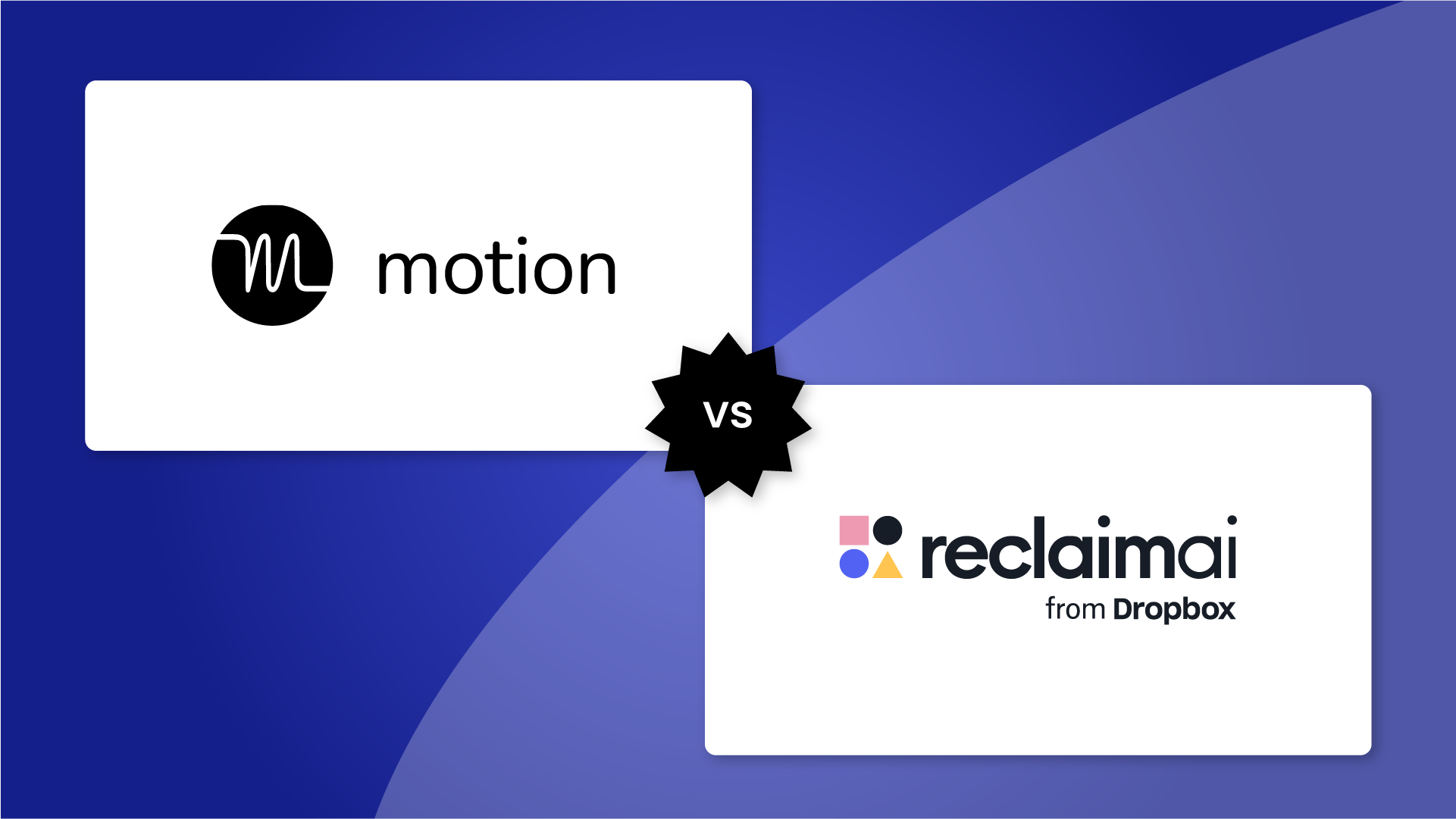Have you ever sat down to work on a project that demanded your full focus – like debugging some code, writing an article, or building out a strategic plan – and totally lost track of time because you were so engaged?
This awesome experience has been coined as a flow state, functioning completely “in the zone”. Flow states are hard to come by – because we’re constantly interrupted by chat messages, email, or yet another meeting.
And our brains know this too. Even if we have 2 hours of free time on the calendar, we anticipate the interruption, constantly checking our chat and email worried we’ve missed a notification.
Needless to say, we can't be highly productive if we're constantly context switching or multitasking. We need to change our strategy and mindset around defending our time and allowing ourselves to focus distraction-free with deep concentration on a single task for an extended period. In other words, we need to block time for "deep work".
In this guide, learn everything you need to know about deep work so you can protect yourself from distractions and focus your time on true productivity.
What is deep work?
Deep work is the ability to focus without distraction on a difficult task for a prolonged period of time to maximize your cognitive capabilities. By allowing yourself to work without interruption, you’re able to achieve peak concentration, become up to 500% more productive, and produce better quality work in less time. Deep work is incredibly important for your most high-value, cognitively-demanding tasks that require your undivided attention – here are some examples of deep work:
- Researching
- Writing thoughtful content
- Analyzing data
- Developing strategy
While deep concentration is the ultimate state of productivity you aim to achieve, it’s not easy to make time for it in the modern workplace.
In fact, it takes about 15-20 minutes to reach a productive flow state of deep work, but every time you’re distracted, that clock resets thanks to context switching. And since the average employee is interrupted a whopping 31.6 times/day, that means they’re getting pulled out of their task work every 15 minutes, making it impossibly difficult to attain a productive flow state.
This is why multitasking actually reduces your productivity by up to 40%. With a constant stream of Slack messages and emails, increasing task workloads, and a 69.7% rise in meetings since 2020 – it’s incredibly difficult just to find time for heads-down work in our crazy schedules. So you can’t just assume you’ll find time for distraction-free concentration throughout the week – you have to defend it on your calendar and shut off notifications to be able to work distraction-free.
Here are the top benefits of deep work:
- Improve performance: Get more accomplished in less time.
- Create new value: Maximize your innovation and creativity.
- Make fewer mistakes: Reduce distractions so you can focus without error.
- Boost brain function. Strengthen your neural pathways so they fire faster.
- Increase job & life satisfaction: Gain gratifying fulfillment through success.
- Master your skill set: Improve your strengths through dedicated practice of your craft.
- Support work-life balance: Get more done so you don’t have to work overtime.
- Meet deadlines: Work faster and more efficiently to get more done.
Cal Newport – the deep work author & expert
Who came up with this brilliant discovery? Cal Newport, a computer science professor at Georgetown University and author of multiple best-selling books on productivity and time management, is best known for exploring the concept in his book ‘Deep Work: Rules for Focused Success in a Distracted World’.
Newport's book Deep Work, an Amazon Best Book Pick and a Wall Street Journal Bestseller, emphasizes the importance of focusing deeply on tasks and developing the ability for distraction-free concentration. Newport defines deep work not just as a skill, but a superpower that can be developed through a rigorous training method.
This training method consists of four rules for deep work, each of which can be consistently improved upon to practice deep work:
- Work deeply: First and foremost, you need to develop your ability to work deeply — for an uninterrupted length of time where you can focus on a cognitively demanding task without distraction.
- Embrace the boredom: Constant exposure to distracting stimuli actually conditions our brain to be unfocused. Embracing boredom trains our brains to resist the temptation of distractions and improves our ability to focus deeply.
- Quit social media: Social media is a huge distraction that hinders our focus. Newport suggests quitting social media entirely, or taking a 30-day break to reflect on the experience.
- Drain the shallows: Deep work is demanding and exhausting. Still, shallow work, like emails and notifications, is also time-consuming. "Tame" these shallow activities to specific times so they don’t interfere with deep work sessions.
What is shallow work?
Shallow work is the ‘busywork’ undercurrent of our lives. While deep work is focusing at your maximum cognitive function, shallow work tasks are your logistical and administrative duties that can be done while distracted, easily replicated, and usually creating new value. Here are some examples of shallow work:
- Email and chat communication (eg. Slack/Teams)
- Data entry
- Pulling reports
- Checking social media
- Meeting to meet
While these tasks still require our time and are necessary to our goals, they’re generally of less substance than the demanding tasks on our list. The problem is professionals spend most of their days hectically jumping around shallow work tasks, attending meetings, getting constantly interrupted by changing priorities, and end each week without the heads-down time they needed for their big-ticket tasks.
Why does deep work matter?
If you’re not intentional with your time, you’re not going to spend it in the productive way that you should. There are just too many obstacles competing for our attention in the workplace that inhibit our ability to perform deep work unless it’s planned.
- Only 53.5% of planned tasks get completed/week.
- Employees only average 11.2 hours/week on productive work.
- Employees waste 2 hours/day on unproductive task work.
- Employees average 25.6 meetings/week.
- The average workweek is 47.6 hours long for full-time employees.
- Employees averaged a 60.2% burnout rate.
Employees want 8.1 more hours/week for productive heads-down work to keep up with their task load. But without prioritizing deep work on the calendar, it’s impossible to make the time. Let’s walk through how to build a deep work strategy that you can easily implement to start building a more productive work routine.
How to practice deep work in 8 steps
While we’d love to spend our full 8-hour workday executing in a high-level deep work mode, the average person can only maintain about 4-5 hours of intense focus a day. After all, the brain needs time rest and recover. It may feel rather effortless when you're in the zone, but it takes a lot of brain power to maintain this state over long periods. Eventually, something's gotta give, and your productivity will start to slip.
So you need to identify which hours of the day you operate most productively in, and prioritize that time for deep work on your high-value tasks. This allows you to use your less-productive hours for shallow work tasks and meetings that don’t require the same high level of cognitive concentration.
Here are 8 ways to become an expert at deep work to master your time:
1. Organize tasks into deep work vs. shallow work
Getting clear on what you need to do is a great start, but instead of aimlessly working through your never-ending task list (that keeps growing every day) – make it a regular habit to organize your to-dos into deep work tasks and shallow work tasks.
Consider the difficulty of each task:
- How long will a task take?
- How much brain power will you need to complete it?
- Can you perform this task while distracted?
- When do you need to get this task done by?
From here you can divide your task list into what will require deep work to complete before the due date, and which tasks can be checked off easily in shallow work sessions or delegated to someone else.
2. Set your deep work hours
After you've sorted your deep work vs. shallow work tasks, it’s time to start mapping out your schedule. Some questions to ask yourself when planning your deep work hours are:
- How many hours of deep work do I need a week?
- How many hours of shallow work do I need a week?
- Do I want to do deep work every workday?
- Which hours of the day am I most productive?
Remember that you can only realistically do about 4-5 hours of deep work a day. Overextending yourself can lead to burnout and mental exhaustion. Everyone’s ideal work routine will look a little different. Some people are early risers and focus best at the start of their workday, while others are more productive after lunch or even late into the evening.
Once you’ve outlined your ideal times and amount of deep work for the week, create smart hours for your calendar to automatically schedule your work during your most productive hours of the day. This is particularly helpful if you’re integrating your project management app with your smart calendar. Simply connect Reclaim.ai (AI calendar) to Google Calendar, and sync your task list to automatically find the best time for your deep work during your ideal hours, while still staying flexible to priority changes and incoming meetings.
Reclaim also has a time tracking tool that analyzes where you spend your time, how much deep work vs. shallow work you average in a week, and what your most productive day is so you can better plan your focus time.
3. Time block your deep work
Once you have your deep work hours set, you can start time blocking tasks to your calendar. Time blocking is the most important part of establishing a deep work schedule. If you don’t defend long periods of time to focus on your challenging tasks, you’re going to lose your time to more meetings, shallow work, and incoming distractions. The simple act of time blocking can actually improve your productivity by up to 80%.
Take a look at your task list, and identify the top-priority tasks you’d like to get done. Ideally you’ll want to focus on only 1-2 deep work tasks a day, in 1-4 hour long work sessions, depending on the estimated time needed for each.
Time blocking is hard, especially if your schedule is changing all the time. Fortunately, you can automate this shallow work task with an AI calendar to automatically find the best time for your deep work routine across your busy schedule. Simply connect your task list to schedule an uninterrupted deep work session for all of your tasks by priority, while still keeping your calendar flexible for priority changes and incoming time requests.
It’s also helpful to defend 30-minutes of catch-up time first thing in the morning, and at the end of your workday, to check your email, Slack, task list, etc. so these shallow work items aren’t pulling at you during your deep work sessions.
4. Block distractions & notifications
Of course, there is an element of self-discipline that comes into play when performing deep work. In order to stay focused, you need a distraction-free work environment. As much as it hurts, this means setting “Do Not Disturb” on your phone, muting desktop notifications, keeping away from social media, and committing to not getting sidetracked on the internet (or eliminating access to distracting apps altogether) for your entire deep work session.
And while it’s challenging enough to keep from distracting yourself, it’s even more difficult to set these boundaries with coworkers. The simple act of automatically syncing your Slack status to your calendar can dramatically cut down on interruptions during your deep work sessions. If a coworker sees a “Writing important strategy plan” status on Slack, they’ll think twice before interrupting you with a non-urgent question. Nonetheless, not everyone will respect your Slack status, so you can also auto-set DND during deep work sessions to completely block notifications during focus times.
Context is key. You’ll already see a huge decrease in distracting requests from your coworkers once you start time blocking your calendar. And it’s way easier to say ‘no’ to things you don’t have time for when everyone can see your priorities right on your schedule.
5. Optimize your meeting schedule
We’re (not) sorry to say it, 71% of meetings are completely unproductive. Yet the average professional attends 25.6 meetings/week. So if you’re spending over half your workweek in meetings (likely scattered throughout the day leaving you a ton of short fragmented free blocks that you really can’t get anything done in), it’s time to get your meetings under control.
Here are a few ways to optimize your meeting schedule so you can defend more time for deep work every week:
- Analyze how much time you average in meetings/week
- Identify which meetings are productive vs. unproductive
- Decline your unproductive meetings
- Create company meeting rules (must have an agenda, objective, attendee limit, etc.)
- Set meetings you’re okay with missing to a lower priority level
- Set your meeting hours to control when they’ll be scheduled
- Create a No-Meeting Day to protect one solid day for productive work every week
Encourage your team to optimize their meetings too. In the most productive teams, everyone has the same mentality around meetings. With clear guidelines and expectations, your team can work together to get more time back for deep work and stop bugging each other around things that can be handled asynchronously.
6. Integrate your project management app & calendar
If your time is your most valuable resource, and your tasks are the reason you have a job – shouldn’t these two be speaking to each other? This major gap between your projects and your calendar is why you never have enough time for task work, and so many project deadlines are missed and extended.
Planning your deep work doesn’t have to be a chore (or another shallow work task you have to spend time on). Instead of trying to work off of two disconnected systems, manually blocking time from your task list to your calendar and rescheduling around priority changes, easily integrate your project management app with your calendar.
While most project management tools have some sort of calendar integration, these usually end up being more hassle than help because Tasks are scheduled as fixed events that jam up your schedule. But you can use an AI calendar like Reclaim.ai to automatically sync your project management app and your calendar to flexibly schedule your deep work. Reclaim finds the best time for tasks for you, keeping that time flexible to reschedule around priority changes and new meeting requests. It supports ClickUp, Asana, Jira, Todoist, Linear, and Google Tasks with more coming soon.
You can also schedule deep work and shallow work using different tags and projects within apps like ClickUp and Todoist to assign tasks to deep or shallow work.
7. Take breaks after deep work
Deep work is very cognitively demanding – and you need to prioritize resting your brain after these intense work sessions so you don’t burn yourself out. Overdoing deep work will leave you mentally drained, and less productive in your next focus time session.
Remember that maximizing your productivity starts by taking care of yourself to avoid mental exhaustion down the line. Try auto-scheduling breaks after your deep work sessions to rest your mind and recharge your energy. But don’t use these breaks to just pivot over to shallow work, take the opportunity to rest your mind. Get up and take a walk, do some stretches, meditate for a few minutes, or grab a snack and drink – anything other than the internet or a digital device. As we mentioned earlier, you want to embrace the boredom.
8. Set & track your deep work goals
Now that you have your deep work goals set and your schedule in order – how are you going to maintain this momentum? Developing a deep work habit isn't easy — distractions and shallow work are always going to be fighting for your time But by regularly analyzing your time, you can see where your time is going week-after-week to make sure it’s aligned with your goals – and quickly reprioritize if your deep work starts to slip. Here are some key deep work metrics to track:
- How much time did you spend in deep work vs. shallow work this week?
- Were you able to meet your deep work goals?
- How many deep work tasks did you complete?
- How much time did you lose to meetings this week?
- What was your most productive day vs. least productive day this week?
- Which deep work task needs to be prioritized next week?
- Do you have to say ‘no’ to anything next week to free up more deep work time?
- How much time did you give yourself for mental breaks and personal activities?
Maximizing your productivity also means being proactive and defensive with your time and availability. With 24.5% of a 40-hour workweek spent on unproductive task work (like checking emails and responding to Slack notifications), it’s no shocker that the average professional only completes 53.5% of their planned tasks per week. But you can use a time tracking app to automatically capture and analyze all of these deep work metrics for you so you can stay focused on your productivity.
Increase your productivity with deep work 🧠
Finding a balance between deep and shallow work helps you develop a manageable schedule, keeps you on top of your to-dos, and also defends sufficient time for you to productively work on your most cognitively demanding tasks.
By tapping into the magic of the deep work philosophy, and better managing the boring (albeit necessary) everyday shallow busywork – you can work to find greater fulfillment in your skill, get more quality, focused work accomplished in less time, and provide an even better value to your team. As per Cal Newport, “a deep life is a good life”, and in the end that’s really what we’re really all about.



































